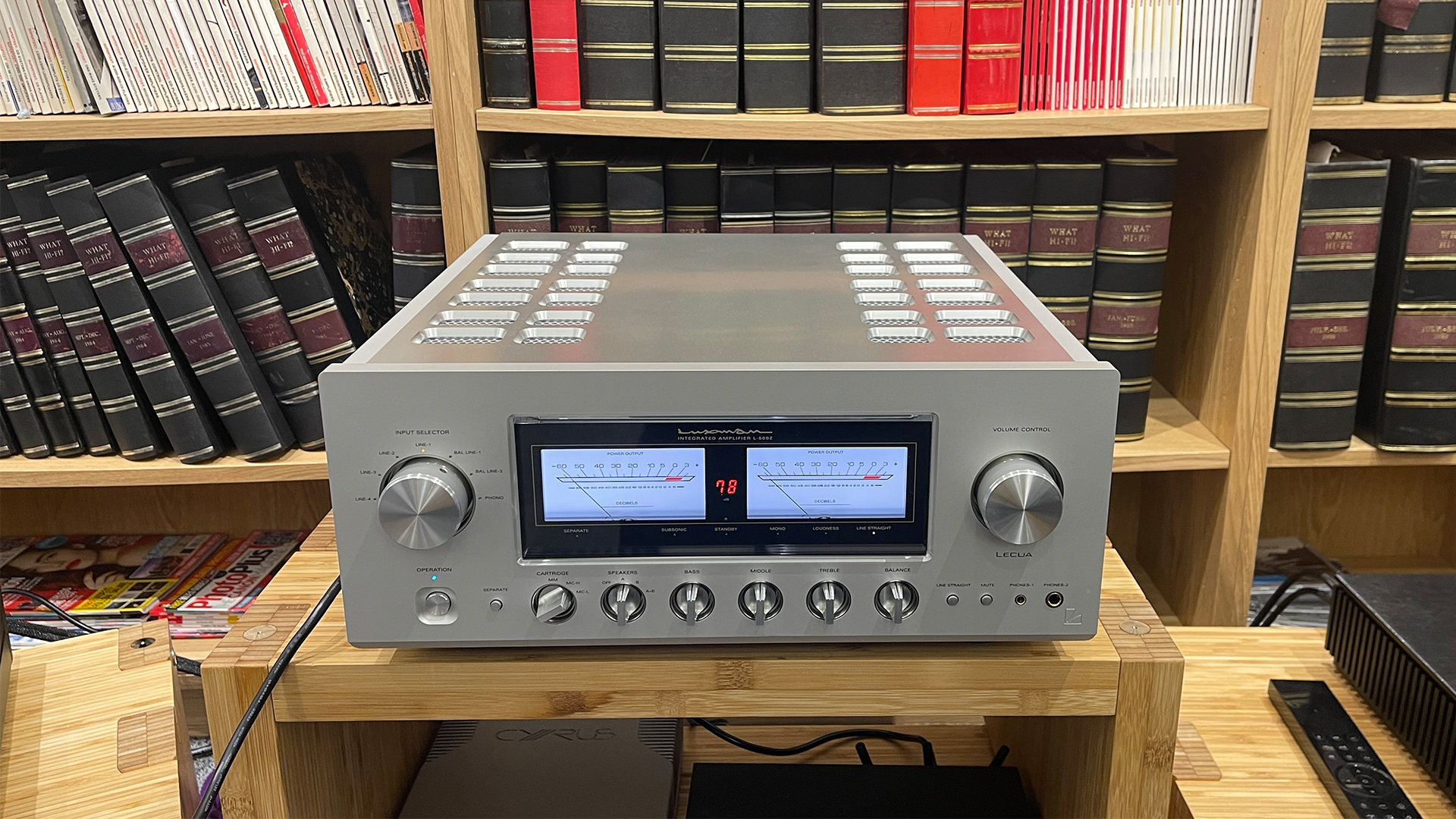What Hi-Fi? Verdict
Luxman’s L-509Z is a superb all-round package that proves a comprehensive feature list and great sound are not mutually exclusive
Pros
- +
Strikingly clean and detailed presentation
- +
Plenty of power
- +
Packed with features
- +
Exceptionally well made
Cons
- -
Needs care in system matching
- -
Plastic battery cover spoils the metal remote
Why you can trust What Hi-Fi?
In the world of analogue hi-fi, simplicity has long been king. Conventional wisdom has it that fewer features mean a purer signal path with the bonus that more of the build budget can be allocated to sound-critical components rather than paying for extras that may or may not be used. In our experience, such a purist approach does indeed tend to lead to better-sounding products, but then again, there are exceptions like Luxman’s L-509Z.
On paper, this classy integrated is about as far from the minimalist ideal as an all-analogue amplifier can get. You have a built-in switchable phono stage, tone, loudness and balance controls, the ability to switch between two pairs of speakers and a choice of headphone outputs. It is also possible to separate the pre and power sections and use them individually should you want to upgrade. The unusual thing is that the L-509Z offers all this while still delivering sound quality that rivals the very best minimalist designs at the price.
Design
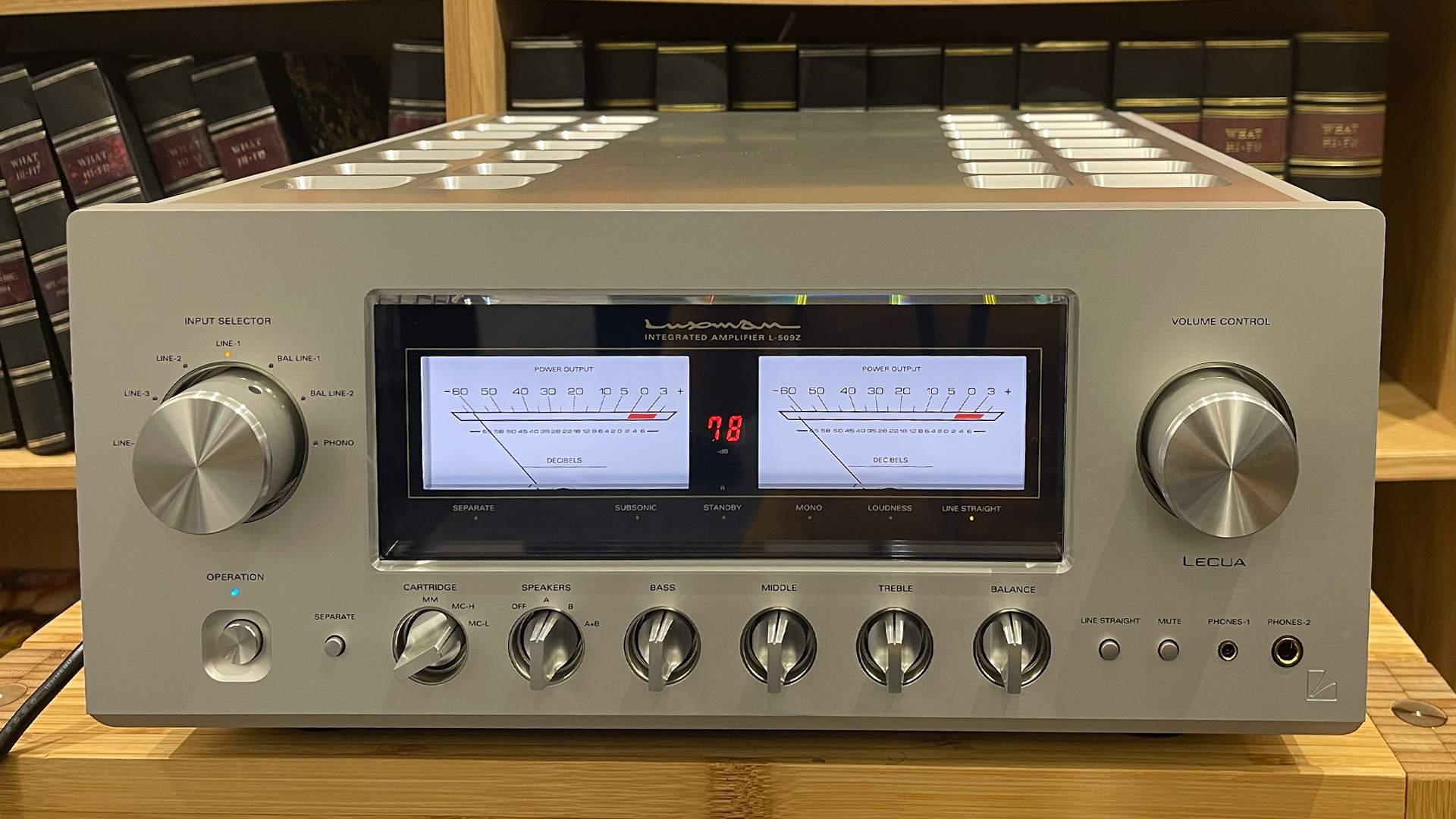
Luxman’s engineers have managed this with top-class engineering and by paying obsessive attention to the details. It starts with a stiff, highly regulated power supply that uses a hefty 600VA mains transformer and a generous 80,000uF of smoothing capacitance and continues with separate preamplifier and power amplifier circuitry, packed full of high-quality components. Each section operates with an unusual form of negative feedback that is claimed to deliver low distortion and a more natural sound.
A great deal of work has been done on the L-509Z’s volume control. This switches through a series of precision resistors to ensure transparency and consistency in balance, even at the lower extreme of its 88-level steps. The signal path is carefully designed to be as direct as possible to minimise signal degradation and the circuit boards are of the peel-coat type to reduce dielectric effects. This attention to detail extends to luxurious speaker terminals, good quality OFC internal wiring and a complement of unusually sturdy copper alloy input connectors.
It is fair to say that the L-509Z is something of a powerhouse. It is claimed to deliver 120 watts per channel into an 8-ohm load and that rises strongly to 220 watts per side as impedance halves. That close to doubling of output is pretty unusual, particularly in integrated designs, and strongly suggests that this amplifier will have no issue driving difficult speaker loads. We certainly didn’t have any issues with the range of speakers we tried during the testing process.
Build
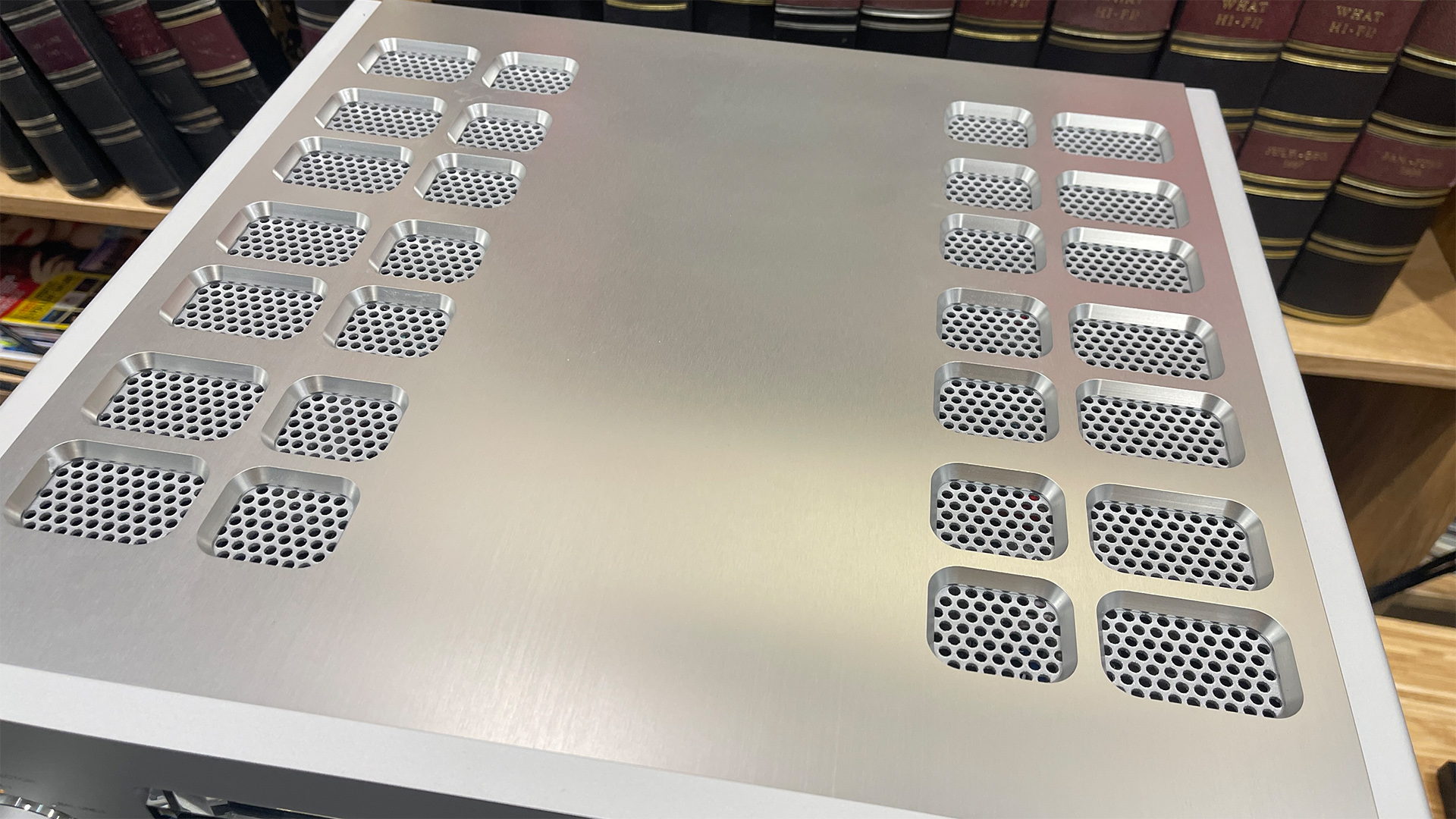
When it comes to general build and quality of finish, this integrated is up with the best we have seen. The casework is reassuringly solid and finished to an exceptional standard. We love the crisp machining around the ventilation holes on the top panel and the way every control works with precision. There is no lost motion or even a slight wobble in any of the control dials, and the intuitive way the digital volume level display responds to the movement of the volume control is a joy. Whoever worked on the software to do that needs a pay rise. The VU meters? We have doubts as to their usefulness, but who with even a trace of affection for hi-fi products doesn’t like them anyway? Those who like to listen in the dark can turn off the illumination behind the meters if they find it distracting.
The amplifier’s mostly metal remote handset is sensibly sized and simply laid out. It works well and we have no issues with operating angles. However, in a rare misstep, Luxman spoiled things a bit by making the battery cover out of plastic and in a shade that is different from the metal body. It is the only part of this amplifier that looks anything less than exemplary.
Connectivity

We have no issue with connectivity. It is generally excellent with six line line-level inputs, including a pair of balanced XLRs. The L-509Z’s phono stage is unusually adaptable, offering easy switching between moving magnet and two moving coil options. The latter can be set to accommodate both high and low-output MC cartridges. In use, it has enough gain to cope with most price-comparable cartridges and goes about its business in a refreshingly quiet and hum-free way. This amplifier can be connected to two pairs of speakers and switched so that it can drive either or both with just a turn of the front panel control dial. Nice.
We are pleased to find that Luxman has specified a headphone output too. Here, once again, there has been serious thought put into the feature by including not only the standard 6.3mm option but also the increasingly popular balanced 4.4mm alternative. In our experience, if your headphones offer the choice of balanced operation it usually leads to a slightly crisper and punchier performance. We are glad Luxman took the extra step.
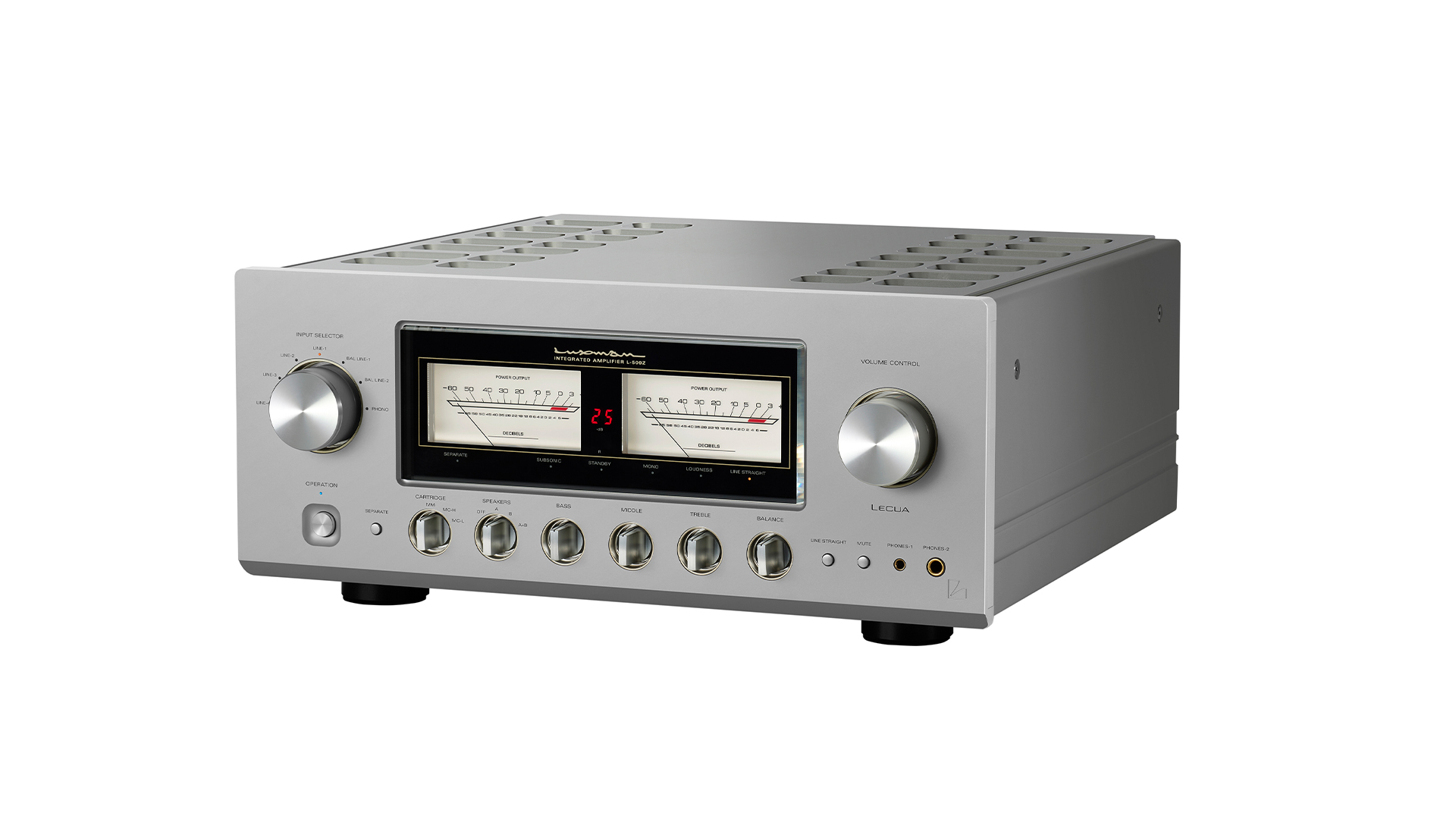
Type Integrated
Power 120W per channel
Phono stage? Yes (MM/MC)
Inputs Line level x 6 (including balanced XLR x 2)
Outputs Pre-out x 2
Bluetooth? No
Headphone output? Yes (4.4mm balanced, 6.3mm)
Dimensions (hwd) 19.3 x 44 x 46.3cm
Weight 29.4kg
Would we have liked digital inputs? The lack of them could certainly be considered a miss, though at this level we suspect that any price and quality-appropriate source is likely to contain more talented DAC circuitry than Luxman could implement here. There is also the danger that any electrical noise generated by such a circuit could well cause unwanted interactions, affecting the performance of the sensitive analogue parts of the amplifier. We have tested numerous high-end amplifiers with digital inputs and have usually felt that their performance with digital signals falls behind even relatively modest outboard DACs like the Chord Qutest. It seems that integration has its limits.
The ability to adjust the tonal balance is fairly rare in high-end amplification. While it is true that such controls can affect the phase of the music signal and overall transparency, if implemented with care those effects shouldn’t be too obvious. Then, such controls can prove surprisingly useful to tame an aggressive recording or add a bit of body to a thin one.
The L-509Z takes a slightly unusual approach by offering a midrange adjustment alongside the usual bass and treble options. These controls work in a relatively subtle way, which makes them more useful than most. There is also a loudness switch that boosts both frequency extremes to prevent the sound from becoming a bit flat at low volume levels. This is another feature that has fallen out of favour in recent decades but we find that it proves handy on the odd occasion. Purists will be happy to know all these tonal adjustment features can be bypassed at the press of the ‘Line Straight’ button. Despite the care taken in implementing them, we can hear small but notable increases in clarity and definition when doing so. Your system will need to be suitably transparent to notice these improvements, though.
Sound
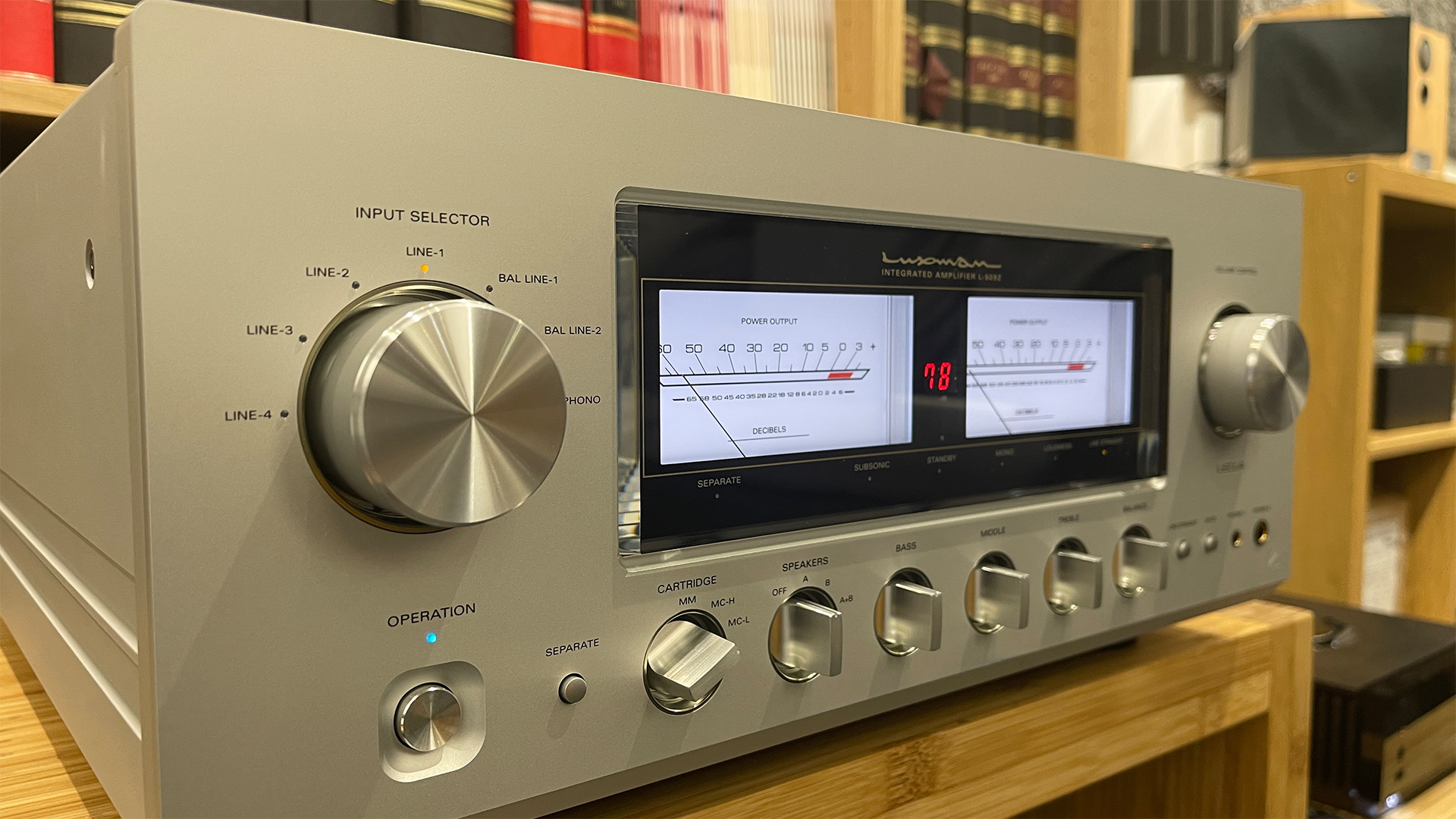
Any amplifier at this level deserves quality sources and equally talented speakers. We feed the L-509Z with our reference sources, the Naim ND555/555 PS DR music streamer and Technics SL-1000R turntable. Since this amplifier is compatible with both moving magnet and moving coil cartridges we try both the Vertere Dark Sabre MM and Kiseki Purpleheart MC. As for speakers, the bulk of our testing is done with ATC’s SCM 50 but we also connect the Epos ES14N and Wilson Benesch Discovery 3Zero to hear how the Luxman responds.
If we were to sum up the Luxman’s sonic presentation in just a few words they would be precision, clarity and balance. This is a sophisticated sounding performer that’s as insightful and refined as they come. Listen to a dense piece of music like Arvo Pärt’s Cantus In Memoriam Benjamin Britten and the Luxman presents it as if served on a platter, making it easy for the listener to dip into individual instrumental strands or take a step back and enjoy the piece as a whole. There is plenty of information: the starkly differing instrumental textures, the acoustic clues that help the listener identify the size and scale of the recording venue and the dynamic nuances that help to build the tension throughout the piece. The L-509Z reveals all these insights and then uses them to build a convincing rendition that places our attention on the music rather than the mechanics of the hi-fi that is reproducing it.
Tonally, the presentation is even and balanced. Compared to similarly-priced class rivals such as the Moon 641 or McIntosh MA8950 it is possible to point to a slight lack of richness and body to the Luxman’s sound, but as long as the partnering system is chosen with care – and let’s face it, at this level it certainly should be – there shouldn’t be an issue. Don’t forget, there are those tone controls to help too. The upside to the Luxman’s presentation is that it sounds pleasingly agile and articulate.
The L-509Z’s soundstage is wide, deep and stable. It is capable of locking instruments and sounds in place even when the music becomes demanding. That generous power output figure translates into a large-scale presentation and the ability to swing dynamics shifts from quiet to loud and back again with grace and composure. There is an ease and control about this integrated’s sound that is admirable.
But can it dance, you ask? We find out by playing Major Lazer’s Pon De Floor. We are not sure whether this recording is considered essential listening at Luxman Headquarters, but it is great at showing off the integrated's speed and attack. Bass is taut, tuneful and delivered with considerable authority. The composure we noted with the Arvo Pärt piece is apparent here, with the L-509Z refusing to sound flustered even at high volume levels. This is a remarkably civilised-sounding product that still manages to capture the drama and excitement of the music it is asked to reproduce. That blend of refinement and enthusiasm isn’t as common as you might expect in high-end hi-fi.

We are pleased to report that the amplifier remains as accomplished when we try it with records. The Luxman’s built-in phono stage retains the general balance and character of the line stages whether we use Vertere’s Dark Sabre moving magnet or the Kiseki Purpleheart moving coil. Sure, in absolute terms there is a mild drop-off of outright transparency, particularly with the moving coil input, but it is important to note that this amplifier still manages to deliver enjoyable results whether we play Beethoven’s 6th Symphony or Michael Jackson’s Bad set.
If vinyl replay is your main source then we would say look into buying a dedicated outboard phono stage, but it would have to be at least of the level of Vertere’s excellent Phono-1 to be worthwhile. If, however, playing records is an occasional treat then the phono module in the Luxman is good enough to cope with that.
It is good news as regards the headphone output too. We try out a range of headphones from Yamaha’s terrific YH-5000SE and Sony’s MDR-Z1R (with both 6.3mm and 4.4 balanced cables) to Grado’s characterful RS1x and the Luxman responds with its customary clarity and insight. The choice of headphones has far more influence on the tonality and character of the sound than this benign-sounding amplifier does, and that is how it should be. The headphone amplifier module has enough grunt to deliver high volume levels with any of the trio of headphones and always sounds in control. The enviable composure we hear through the speaker outputs is notable here too.
Verdict

What we have here is a high-end integrated amplifier that ticks all the boxes. To our eyes, it looks appealing in a retro way and there is plenty to admire in its design and build. After that, there is the sound quality that is as good as any alternative we have heard. If you are lucky enough to buy at this level, the Luxman L-509Z deserves a high place on your shortlist.
SCORES
- Sound 5
- Build 5
- Features 5
MORE:
Read our Moon 641 review
And our PMC Cor review
How to choose and set up a stereo amplifier
Our pick of the best stereo amplifiers you can buy
What Hi-Fi?, founded in 1976, is the world's leading independent guide to buying and owning hi-fi and home entertainment products. Our comprehensive tests help you buy the very best for your money, with our advice sections giving you step-by-step information on how to get even more from your music and movies. Everything is tested by our dedicated team of in-house reviewers in our custom-built test rooms in London, Reading and Bath. Our coveted five-star rating and Awards are recognised all over the world as the ultimate seal of approval, so you can buy with absolute confidence.
-
Sir Ken Smith OBE ReplyLuxman spoiled things a bit by making the battery cover out of plastic and in a shade that is different from the metal body. It is the only part of this amplifier that looks anything less than exemplary.
Might this be to try and prevent the batteries shorting? -
Friesiansam Reply
It shouldn't need to be, if it is properly designed. The remote for my Pathos amp, is made from a single aluminium casting with a stainless steel plate on the bottom. The whole thing looks and feels like a high quality object.Sir Ken Smith OBE said:Might this be to try and prevent the batteries shorting?
